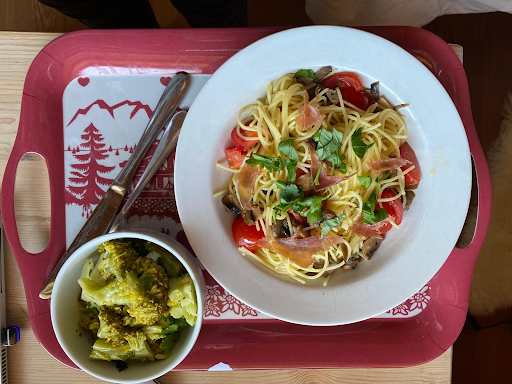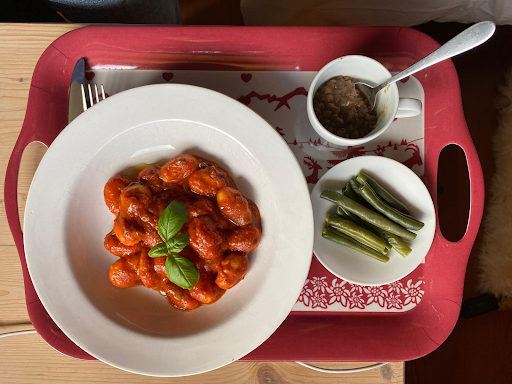Aurélia Nguyen, Deputy CEO, CEPI
“It helps me to have a genuine curiosity for how people got to the position they’re expressing, even when it’s a really different world view from my own.”
About Aurélia
Aurélia Nguyen is Deputy Chief Executive Officer at CEPI, where she helps lead the coalition’s mission to accelerate vaccines against epidemic and pandemic threats and make them accessible to people in need. Previously, she served at Gavi as Managing Director of the COVAX Facility and later as Chief Programme Officer, steering global procurement and delivery of COVID-19 vaccines and Gavi’s vaccine and country programs. A trained scientist and chartered accountant, she has focused her career on shaping markets and policy to expand access to life-saving immunization.
Q: Tell us about a time of crisis, when you were called to deliver resilient leadership.
The COVID-19 pandemic was a global crisis and Gavi was in a unique position to be able to co-lead the vaccine response to the public health crisis. Within Gavi, I was in the unique position having been the one who had designed the roll-out of vaccines for a number of new emergencies, most notably the West Africa Ebola 2014 epidemic. When COVID-19 emerged, like everyone, my first reaction was fear and confusion. Quickly thereafter, there was the added sense of both responsibility and even some privilege that comes with having some agency to tackle the massive global crisis that was unfolding.
As its Managing Director, I was charged with designing and setting up the COVAX Facility, the Vaccines Pillar of the Access to COVID-19 Tools (ACT) Accelerator. That involved taking an end-to-end approach, from sourcing eventual COVID vaccines (there were no vaccines at the time COVAX was set up), to designing procurement and deployment processes, and determining which countries would be served and how.
In this time of great confusion, it was clear at the top level what needed to be done – set up the vaccine response. At the next level, all of a sudden, the voices started pointing in different directions. Part of the initial challenge was to sort through the noise, to articulate expressed needs into a coherent scope, and recognize where the tension points were. Some stakeholders’ needs were consistent with our ongoing mission in terms of ensuring access for COVID-19 vaccines to low- and middle-income countries, similar to how we supported them for other vaccines. However, donor countries were in a different role than before - they were providing funding to support equitable access in LMICs but simultaneously they needed to source vaccines for their own populations. This was very different from how we had interacted with them in the past; there was a new dynamic that needed to be contended with. This was not a business-as-usual situation; new asks, new stakeholders needed to be considered.
Q: What was your vision for resilience, to support yourself and your stakeholders?
“We took it a day at a time, stripping everything to a basic level of simplicity.”
At an individual level, the vision of resilience was very practical: keep the family unit safe. My family (my husband, our then two- and six-year old children, and I) were in lockdown just as the rest of the world. So, we boiled everything down to the practicalities of how to keep the needs met for the family of four - from 6 am to 1 am, because those were the typical working hours. My husband and I would take shifts, working and looking after the children. He very generously took the lion’s share of the childcare, and we took it a day at a time, stripping everything to a basic level of simplicity. I had to reconcile that essential vision for my family with the huge task I was charged with. In essence, the whole family was pitching in to help me do the work that I needed to do.
I saw the stakeholders I was serving in concentric circles. After my family, the immediate next concentric circIe was my team. I wanted to stay connected to my team so I started writing to them every day. At some point during the crisis, I started to run out of steam. It was 11:55 pm and I hadn’t sent them anything yet. So I sent them a poem that I quite liked. I started sending something that was not work-related. It was a way to keep reaching out, it became a ritual.
Then, in my functional role, as COVAX Facility Managing Director, my stakeholders were the Gavi Secretariat, the Alliance, the Board, and I saw my responsibility as a way to translate the vision for COVAX into tangible execution.
Q: What were some behaviors that supported your own resilience?
“I protected Saturday mornings for family time. We went outside, rain or shine; we spent time in the forest or garden.”
Sleeping and eating are the two fundamentals. If I can eat and sleep (even if only for a few hours), I’ll do many many things for you!
So often, I was on endless calls throughout the work day. My husband, who is an amazing cook, would make up these incredible trays of food outside the door of my home office. They were so beautiful that I started taking pictures and sharing them with family.
Food Tray 1 - Aurélia Nguyen
Food Tray 2 - Aurélia Nguyen
I protected Saturday mornings for family time. Even though it was for just a few hours every week, it was essential and restorative. We went outside, rain or shine; we spent time in the forest or in the garden. That’s the time the kids would know that I would be available, that I wouldn’t be on a device or have an airpod in one ear.
Looking after the basics was super important. From a work perspective, I worked to find balance between those moments and settings within which I could be more myself, experience and express frustration, disappointment, exhaustion, and those moments where people were looking to me for leadership - that built over time, understanding when to choose to express those emotions because, as a leader, I needed to do it in a way that wouldn’t a downward spiral for others.
Q: What were some behaviors that supported your stakeholders’ resilience?
“Understanding the sets of challenges other people were facing helped me to calibrate what I could expect of them.”
There was huge burnout across the organization. Of course, there are many different factors, but I think the single highest driver can be the loss of agency over one’s time. For that reason, we may have been having 100-hour weeks but I introduced one time block for individual agency – Saturday mornings were protected for me and each person was to choose the moments that were important to them.
It’s also really important to get to know people and their approach to resilience, their tolerance levels. Being so busy with my own circumstances, my two small children, I lost touch with the fact that there were people who were completely isolated. One person told me they hadn’t physically touched another human being in months. It was quite the reality check and generated an important insight for me. Understanding the sets of challenges other people were facing helped me to calibrate what I could expect of them. Being cognizant of their capacities and constraints allowed me to more effectively allocate work, and to consider how much to demand of whom and at what time.
We had huge turnover, which is typical in an emergency setting. It was new that, from a personnel perspective, we were becoming an emergency organization and we needed to adapt to that reality. I remember tapping someone to help and the person declined, preferring to work on the regular business rather than the pandemic response. I was initially shocked but I earned huge respect for that person being able to express that they would contribute differently and that was perfectly valid. Likewise, I had a colleague who contributed for six months and then expressed respectfully that they were ready to move back to regular business. I learned from that and adopted that tour-of-duty approach across the response where needed.
Q: Are there any behaviors that did not serve you well during the crisis?
“In describing a moment of visible frustration, people were reacting to my reaction rather than to the problem at hand.”
Working hours became a very loose concept. The vast majority of that time was filled with meetings with various stakeholders. By the time those were done, usually very late (9 at night), then there would be another set of internal regroupings to make sure the team would know where we sat. And after all that, Seth Berkley, the Gavi CEO at the time, and I would huddle. It was an important moment of alignment and support, and it was a very creative space for unlocking problems. However, ending the day with the most stressful things, the five things that had gone wrong and the 10 things that needed to be done the next day, was also the worst recipe for winding down and preparing for sleep.
Another that comes to mind is that, deep into the pandemic, there was one decision that was being litigated for a long time. I was visibly irritated at having this endless discussion and let my frustration show in a key governance meeting. It did a disservice to the team. People were reacting to my reaction rather than to the problem at hand.
Q: Can you share a role model for resilient leadership?
“Dr. Ngozi Okonjo-Iweala... Her abilities to navigate extremely high-pressure environments and to earn respect without being abrasive, to be able to name the difficult problems in a way that is non-personal, have really stuck with me.”
Dr Ngozi Okonjo-Iweala, now the Director-General of the World Trade Organization, was the Chair of the Gavi Alliance Board at the beginning of the pandemic. She’s a personal role model for me. Dr. Ngozi has an amazing ability to speak to people at any level, whatever illustrious or mundane disposition, with the same tone and the same level of respect. She was very clear-eyed about the gravity of the situation. Her abilities to navigate extremely high-pressure environments and to earn respect without being abrasive, to be able to name the difficult problems in a way that is non-personal, have really stuck with me. Also, she engages others to offer their views while also offering her own view as a leader - it’s a remarkable diplomatic skill. She has a powerful capacity to reconcile the extremes between being a neutral broker on one end and trying to convince with her own views on the other.
Q: What thoughts support you during challenging times? Mine, during this year, has been to remind myself that “there are many good ways to do good in the world”.
“It helps me to have a genuine curiosity for how people got to the position they’re expressing, even when it’s a really different world view from my own.”
Two thoughts often come to me as I navigate a complicated landscape:
It helps me to have a genuine curiosity for how people got to the position they’re expressing, even when it’s a really different world view from my own. I’m fascinated by how something is so self-evident in my worldview but, in your worldview, it is not.
Is my family doing ok? It’s very grounding. If I know my family unit is doing ok, by and large, then I have the appetite and capacity to engage and help solve the bigger problems in the world.



